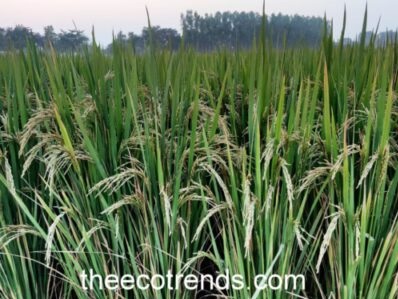More than half of the population of the world comprises farmers. These farmers know that maintaining and conserving natural resources are very important to sustain their lives. However, the demand of more and more food due to the exploding population and higher expectations for comfort and wealth enforces these farmers to exploit more and more of the natural resources through the application of modern technology.
The agriculture based on the latest farm machinery, hybrid and high-yielding crop varieties and agrochemicals is called as modern agriculture. Under the changing trends of modern agriculture, the difficult situation of maintaining and conserving natural resources is being faced the world over in the agriculture sector.
Impacts of Modern Agriculture on the Environment
Agricultural expansion and production of more food is required in many parts of the world like South Asia, eastern North America etc. But there is no scope for consuming more land for this purpose.
1. This situation hampers the Development to a considerable extent. The arable land per person is shrinking and it has declined from 0.32 hectares per person in 1961-63 to 0.21 hectares per person during 1997-99.
2. About 40 per cent of the land in the world is subjected to soil erosion and degradation.
3. Agriculture is the largest user of water in developing countries. About 76 per cent of the total freshwater withdrawal in the world is consumed in agriculture alone. Africa, the Middle East and South Asia consume up to 90 per cent of all the water withdrawals.
4. About 20 to 30 per cent of irrigated land in the developing world has been damaged by water logging or salinity. Some 12 million hectares of irrigated land have gone out of production.
5. About 250 million people have been directly affected by desertification. Large-scale use of agrochemicals like synthetic fertilizers, pesticides hormones etc. not only damage the quality of soil but they joins the locally running food chains and accumulates in the natural resources. When consumers like animals and human beings consume food, they easily get into their bodies and accumulate inside fatty tissues.
Monoculture
Growing single-crop species over a large area or farm is called intensive farming or monoculture. Earlier practices of mixed cropping related problems in crop management, like harvesting etc. Uniformity in the height of plants adds beauty to our fields and makes the application of agrochemicals easy. It also saves time and energy in the segregation of grains in threshing.
Impacts of Monoculture on the Environment
The practice of producing or growing one single crop over a wide area, again and again, is called as monoculture. There may be two distinct definitions of monoculture: Vegetation composed of a single species and, Field composed of a single crop rather than multiple crop species. During the days of the green revolution, farmers had to practice monoculture due to its beneficial effects –
o Reduced plant competition for nutrients, space and solar radiation,
o Control of undesirable or unprofitable organisms,
o Reduction of costs by limitation of specialized machinery required for arable operations,
o Maximizes profit from the growing of high gross margin crops.
Despite the above benefits, monoculture has many adverse impacts on agriculture as well as on the environment on the whole. Some of these impacts are mentioned below-
1. In monoculture, a vast area is cleared to convert it into a big farm. For this, all the trees and bushes are to be cleared without leaving any obstruction in between. This exposes the soil to the battering action of rain, wind and water currents. Extensive soil erosion follows in such an area. We have been losing about 7 million hectares of useful cropland every year due to soil erosion as per the reports of the UN and FAO (1980).
2. The monoculture provides ideal conditions for the development of a vast variety of insect pests and diseases. More and more pesticides are needed for their control and eradication. Thus, a lot of money is wasted in purchasing synthetic pesticides.
3. High-yielding crop varieties drive away several indigenous crop varieties. For example, there were about 40,000 indigenous varieties of rice before the Green Revolution. But, due to monoculture, most of these indigenous varieties have disappeared and only 50 of these have remained in Indian fields by now. Thus, this method of agriculture wiped away most of our indigenous genetic resources.
4. Most of the oil seeds and pulses have been neglected through monoculture as only wheat, rice and maize occupied major areas of farmlands. These crops make the soil fertile by enriching it with nitrogen. As such farmers have to purchase more and more nitrogenous fertilisers from the markets. This results in pressure on the national economy.
5. The cultivation of only dwarf varieties of wheat and rice created the problems of straw fodder. Thus, farmers have to invest more money in making arrangements for feed for cattle.
6. Little fallow periods are to be left in between two crops. So, it does not consume much time to recoup the lost fertility. So, more and more fertilizers have to be added, to each group. But gradually, the organic matter appears and soil is converted into a heap of sand silt and clay, mostly deficient in nutrients.




